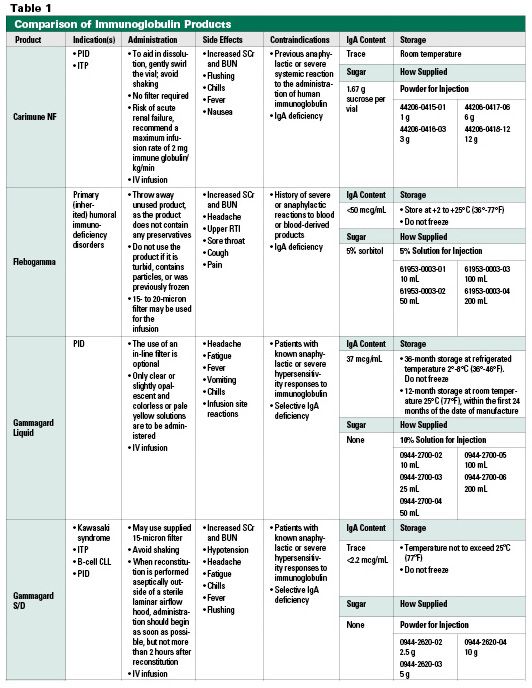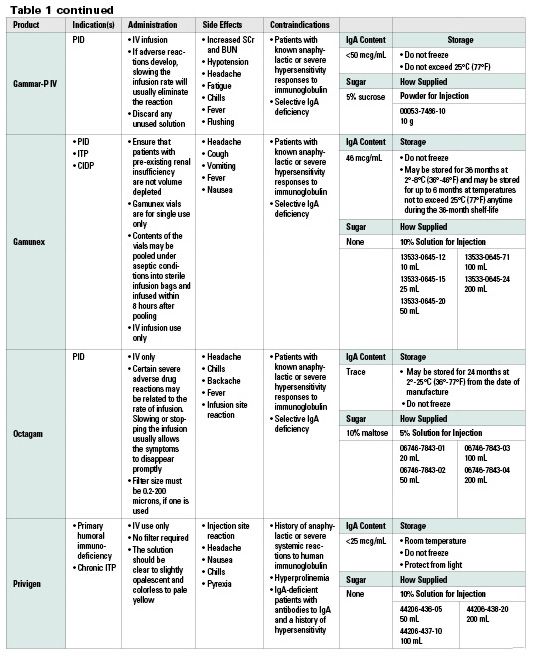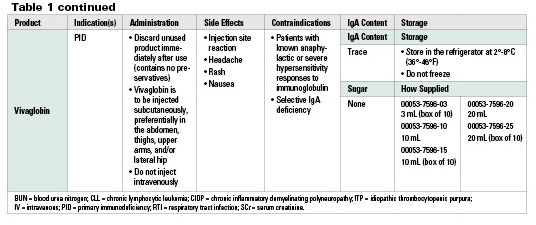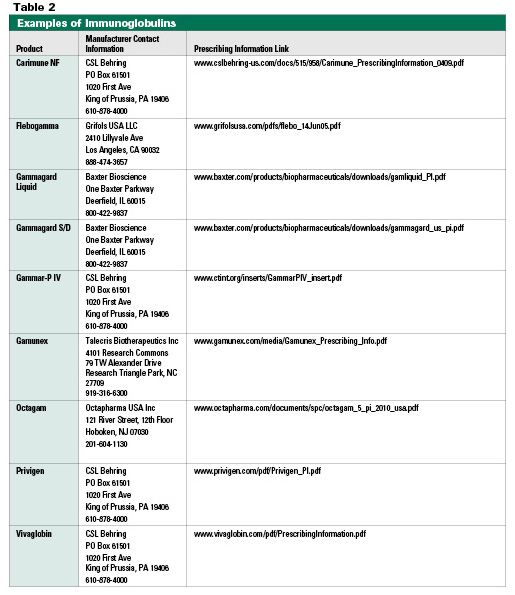Publication
Article
Pharmacy Times
Specialty Pharmaceuticals: Immunoglobulin Therapy
Author(s):
When patients have immunodeficiency conditions that require immunoglobulin therapy (IVIG), clinicians must consider carefully which IVIG product will have the fewest adverse effects and the highest level of efficacy.
Mr. Allinson is chief executive officer and chief clinical officer of Therigy, LLC.

Immunoglobulins (called IgG [immunoglobulin G], IVIG [intravenous immunoglobulin], or IGIV [immunoglobulin intravenous]) were first introduced in the 1980s. IVIG is currently approved by the FDA for 6 primary and secondary immunodeficiency diseases: allogeneic bone marrow transplantation, B-cell chronic lymphocytic leukemia, pediatric HIV infection, Kawasaki disease, immune thrombocytopenic purpura, and graft-versus-host disease. Beyond these approved uses, IVIG is used for a variety of conditions; the Aetna Clinical Policy Bulletin lists 41 conditions where IVIG therapy is medically necessary.1 Although reports of IVIG use continue to grow at a tremendous pace, only a few high-quality randomized controlled studies have been reported.1
IVIG is a plasma protein product derived from the pooled human plasma of between 3000 and 10,000—and sometimes as many as 100,000—healthy donors. IVIG is available in different concentrations and volumes and has the full array of immune antibodies present in the normal serum. In the United States, 8 brands of IVIG are available in strengths of 3% to 12%, depending upon the manufacturer. Products are either lyophilized, requiring reconstitution, or they are packaged as a solution requiring refrigeration prior to use. A lack of reliable evidence exists that any one brand is more effective than other brands.1 IVIG products may differ in ways that are important to patients receiving them. All products contain stabilizers, such as sucrose, glucose, and maltose; some products contain amino acids, such as glycine and proline. As a result, some patients may experience a different range and/ or severity of unpredictable adverse effects from different products. It is common to switch patients from one product to another in order to attempt to control side effects.
Premedication prior to IVIG infusion is often necessary because the potential exists for severe hypersensitivity reactions or anaphylaxis and/or more common side effects.2 These can occur either during or after infusion therapy and may be correlated with the trace detectable levels of IgA and other components of the IVIG solution. Patients who are IgA-deficient and are exposed to IgA in pooled sera may develop IgE antibodies against IgA.3 When this occurs, the immune system responds as though a foreign body were present. The use of IgA-depleted IVIG has greatly reduced the risk and increased the safety for patients who are IgAdeficient, even after long-term use of IVIG.4 Based on their tolerance to and history with IVIG therapy, patients will have a broad spectrum of premedication needs. Some patients require no premedication, whereas others may require a wide range of premedications, such as antihistamines, antiemetics, sedatives, analgesics, antipyretics, and hydration solutions.2
The patient’s medical history provides the best guidance to the need for IVIG therapy. Often, the patient’s condition goes undiagnosed for several years before the need for therapy is identified. Over time, the patient may present with only marginal changes to health status that do not impact his or her quality of life, and clinical diagnosis is delayed. Furthermore, with only modest impact on a patient’s daily life, it is hard to justify treatment with an expensive therapy such as IVIG. Health plan authorization of treatment with IVIG may be delayed until less expensive alternatives have been shown to be ineffective.
Clinical assessment and evaluation should reveal a previous history of IVIG use and patient response to therapy.2 The health care professional must consider 2 important items in regard to previous IVIG treatment:
1. Was there an appropriate response to treatment?
2. Did the patient experience any side effects during or after the infusion?
When contemplating treatment with IVIG, the plan must take into account if the patient had a hypersensitivity reaction or other side effect from previous treatment. If the patient has a history of these reactions, the treatment may require changes or additions to the premedication strategy or the IVIG product, dose, concentration, volume, rate, or frequency of administration.
In conclusion, the use of IVIG therapy continues to grow. Several times in the past 5 years, demand has outstripped supply, critical shortages of the product occurred, and manufacturers were forced to place it on allocation. Patients must be carefully evaluated and monitored while on this therapy to avoid serious side effects. %u25A0




References
1. Clinical Policy Bulletin: Intravenous Immunoglobulins (IVIG). Aetna Web site. www.aetna.com/cpb/medical/data/200_299/0206.html. Accessed January 29, 2010.
2. Loretz RL. IgG infusion in the presence of chronic concurrent multi-health system problems. Critical Healthcare Registered Nursing Services. June 2007.
3. Rose ME, Lang DM. Evaluating and managing hypogammaglobulinemia. Cleve Clin J Med. 2006;73(2):133-144.
4. Cunningham-Rundles C, Zhou Z, Mankarious S, Courter S. Long-term use of IgA-depleted intravenous immunoglobulin in immunodeficient subjects with anti-IgA antibodies. J Clin Immunol. 1993;13(4):272-278.







